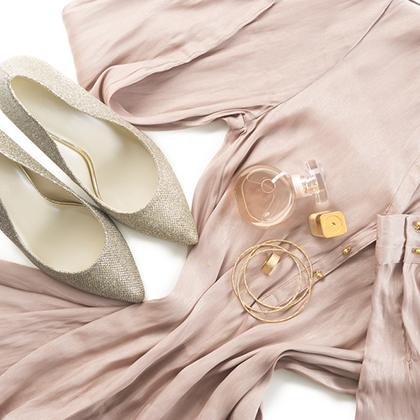
Image Source: Shutterstock
I ran across an article earlier today on Black Girl Long Hair about last week’s #TeacherBae controversy. The individual deemed #TeacherBae, Patrice Brown, is a paraprofessional who works for Atlanta Public Schools. She went viral after selfies from her Instagram account showed her striking poses in the classroom and at home in figure-hugging ensembles, causing people to debate whether or not her attire was appropriate for work.
Things went so far that the APS had to issue a statement about Brown and the dress code, leaving the young woman to defend herself against a barrage of criticism. “I just wish they would respect me and focus on the positive and what truly matters—which is educating the children of the future generations and providing and caring for them.”
In the BGLH article, the conversation was centered on whether or not Brown was body shamed. The argument was that women like Brown, who are curvy, are built like everyday Black women. Many of us can’t help it if we are Rubenesque (don’t you just love that word?). And if teachers who were less curvaceous wore the same things to work, there likely wouldn’t be an issue. Literally, no one would would probably have even noticed the ensemble. As this Facebook user pointed out, that’s the problem:
Michelle Obama was even brought into the conversation, citing that fabulous Essence spread where the First Lady’s curves were on full display. Leila of BGLH noted that Brown and Obama’s body types are not that far off, and while we celebrated FLOTUS, we questioned and slammed the young professional.
In the end, the author posed a very interesting question that made me think: “It seems we are comfortable seeing black women shaped like Brown in music videos or flexing on Instagram. Why can’t we also envision them as professionals, community leaders and mothers?”
It’s very true that Black women are often made to feel as though we are being inappropriate for wearing things that hug our curves. A simple pencil skirt for work can bring a lot of attention if your hips are wide. That button-down shirt can be a problem if you’re bustier than most. And dress pants? Don’t get me started on the comments you might get if your backside fills them out. Even outside of work hours, I can attest to the struggle to just wear certain workout clothes.
For instance, when I asked my fiancé if I should cover up before going for a run, he told me I didn’t need to because I looked fine. I was wearing a T-shirt, long Black Nike tights, and sneakers.
“Okay, I just wanted to be sure because I’m not trying to draw attention like that,” I said. “I just want to be comfortable.”
“Well,” he replied, “you are wearing tights, so you’re kind of asking to be stared at.”
Was I though?
There is a lot of truth to the idea that White women who aren’t as shapely get away with wearing a lot more than Black women. What we’re told looks inappropriate appears to be any ol’ skirt and pant or tight and tank for them. So I do believe we are sometimes unfairly accused of trying to draw attention to ourselves when we were just born with, as Leila said, “hips, ass or breast for days.” Sometimes we really can’t help it.
But, if we’re being honest, ladies, I think we know that a majority of the time, we can. While Patrice Brown is a beautiful young woman who I’m sure does great work for the kids in her Atlanta school, the pictures I saw of her that went viral made me think she was headed to a nightclub, not work. The shoes alone in the picture of her above don’t even give me a work vibe, so I don’t even need to say anything about the body-con dress. Do I think I’m shaming her body? Not at all. Her body is great! But I am encouraging her to use the same discernment she would probably use to pick out a church outfit in picking out an outfit for the schoolyard: You can still be beautiful and stylish without going the skintight route. Lycra isn’t meant for every setting.
And if we’re bringing the First Lady in the conversation, it should also be noted that much of the excitement over her curves came from the fact that some were surprised that her backside was so ample. That is a testament to the fact that as our First Lady, she’s been dressed in a way that doesn’t completely hide her body, but knows what is appropriate to play up and when: shift and A-line dresses, flowing skirts, statuesque gowns. We see the waist (thanks to all the belts in her wardrobe), we see the great arms and shoulders, and sometimes we see the legs and the hips. The rest, it seems, they save for Barack.
I say all that to say that I do believe there is a time and a place for everything. There are ways to play down your assets, as well as ways to accentuate them. The latter way of going about dressing just might not be widely embraced when you’re teaching students (and definitely not high school students). I have a colleague who is a 36DD who you wouldn’t know was so busty due to the fact that she saves her push-up bras for the weekend, sometimes opts for minimizer bras, and stays reasonably covered up when it comes to her tops. She, like many of us, gets that you often need to reel it back for your 9-to-5. That to me, is not about concealing our bodies. In fact, go wild after hours I say! We do so as not to hide what God gave us physically, but to make the talents and knowledge he also gave us the center of attention when it matters most.









